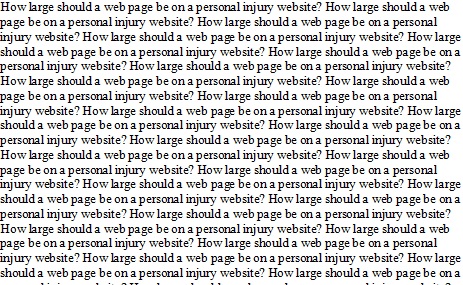When it comes to specific areas of practice pages, bigger is better.
Long form content ranks better, obtains more links, explains more to potential clients, and ranks for all sorts of long tail search terms.
That said, many web visitors land on a page, see the call to action, and call.
How many words should a page have?
I always tell people that I don’t count words, I cover topics. That said, many pages need to be well over 1,000 words long. In fact, I have built out high ranking dog bite, burn injury, car accident, and wrongful death practice pages which are in the neighborhood of 2,500 words long.
Break up the text
When you start cranking out huge pieces of content, it is important to break up the text.
You can do this with:
- bullet points
- images
- videos
Nobody wants to see this:
Cover the topic thoroughly
If a bus accident page is being built out for a Charlotte area personal injury lawyer: cover the routes, common injuries sustained, previous cases, and the names of the bus lines serving the area, in this case, CATS (Charlotte Area Transit System), Greyhound, and Tornado. Cover how accidents occur, the types of injuries sustained, and what steps people should take to protect themselves in the event they or a loved on has sustained an injury.
Rich Content
Rich content has content in addition to text. Examples include images, infographics, and other media like audio or video. Embedded YouTube videos work great here, and I prefer them at the top of pages to increase use engagement and time spent on site.
Add a FAQ
A FAQ (list of frequently asked questions) may be added to the bottom of a page to give it even more size. Plop it in or get fancy with accordion dropdown menus as long as Google’s spider can easily crawl this text content.





Leave a Reply